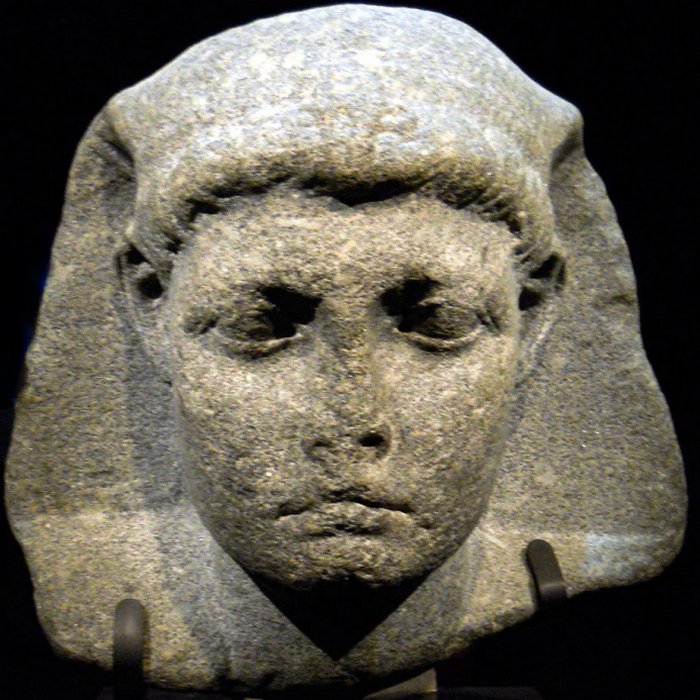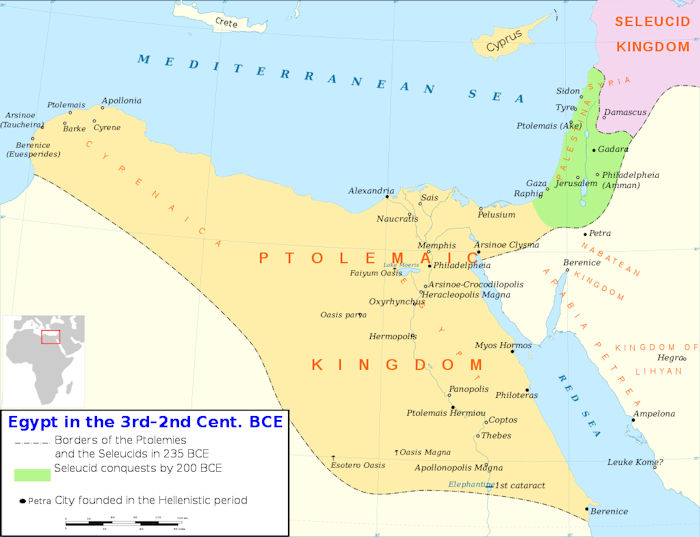‘Little Caesar’: Forgotten ‘King Of Kings’ Who Died Very Young
A. Sutherland - AncientPages.com - Caesarion was murdered on August 23, 30 B.C., only 17 years old. He was the last King of the Egyptian Ptolemies, most probably the son of Julius Caesar, and his mother was Cleopatra VII.
Caesarion was born in 47 B.C. in Egypt.
It is not certain, but commonly thought that the Roman leader was actually his father. If he really was a child of Caesar, it was also his only son.
No documentation has been discovered about his death; because of his young age, it is believed that he died of strangulation. Credit: Sdwelch1031 - CC0
Caesarion was said to have inherited Caesar's appearance and manner, and he was even allowed to use his name, but Caesar never officially acknowledged the boy.
In 46 - 44 B.C., he stayed with his mother in Rome. After the murder of Caesar by conspirators in 44 BC, Cleopatra and Caesarion returned to Egypt.
The three-year boy Ptolemy XV was proclaimed "King of Kings" and reigned jointly with his mother from September 2, 44 B.C.
He wasn't aware of the power struggles around him and his mother. Some powerful men wanted even more power; among them was Mark Antony, his mother's lover, and a Roman General and Julius Caesar's second cousin. The next one was the aristocratic Marcus Lepidus, who was earlier Caesar's, a close ally.
Ptolemaic Egypt was a culturally and intellectually lively place. Amphipolis - CC BY-SA 4.0
Then, there was Octavian; his claim to power proceeded from his status as Caesar's adoptive son. He did not like that Mark Antony gave Caesarion numerous titles (including 'King of kings') and possessions in the east when Antony officially announced that Caesarion was a true son of Caesar.
Octavian had a lot of support because Caesar's adopted son was considered his rightful heir. However, the whole situation began to worsen more and more because his political position was threatened.
The conflict between Octavian and Antony resulted in the Battle of Actium. On the morning of September 2, 31 B.C. the fleets of Roman Mark Antony and Cleopatra, queen of Egypt, met the fleet of Octavian leader just outside the Gulf of Actium in Greece.
A relief of Cleopatra VII and Caesarion at the temple of Dendera, Egypt. Credit: Rowan - Public Domain
Octavian won the battle.
Following Antony's disastrous defeat at Actium in 31 during the war against his fellow triumvir Octavian, Cleopatra sent Caesarion to Berenice, a seaport on the Red Sea coast of Upper Egypt.
Anthony escaped to Egypt, but as Octavian's legions closed in the following year, so Antony committed suicide by stabbing himself with a sword. He died in Cleopatra's arms. Soon after, Cleopatra's arms would be cold with death when she committed suicide by-asp on August 12, 30 B.C.
On Octavian's way to absolute power, one of the last obstacles is Caesarion.
Octavian lured the young King to Alexandria and ordered the death of his step-brother, Caesarion, and so it happened. Octavian chooses authoritarianism over democracy while Caesarion ('Little Caesar') is already dead, buried, and not particularly often mentioned in historical records – simply – forgotten.
Updated on August 27. 2023
Written by – A. Sutherland AncientPages.com Staff Writer
Copyright © AncientPages.com All rights reserved. This material may not be published, broadcast, rewritten or redistributed in whole or part without the express written permission of AncientPages.com
Expand for referencesMore From Ancient Pages
-
 Ancient DNA Sheds New Light On The Fall Of Major Civilizations
Archaeology | Aug 9, 2022
Ancient DNA Sheds New Light On The Fall Of Major Civilizations
Archaeology | Aug 9, 2022 -
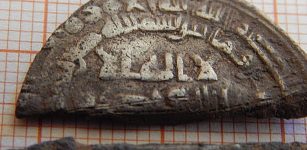 Treasure Trove Of Arabic Coins Dated Back 1,000 Years Unearthed In Graveyard In Poland
Archaeology | Jul 9, 2019
Treasure Trove Of Arabic Coins Dated Back 1,000 Years Unearthed In Graveyard In Poland
Archaeology | Jul 9, 2019 -
 Ancient Byblos: Powerful Phoenician City With Own Kings
Civilizations | Apr 23, 2016
Ancient Byblos: Powerful Phoenician City With Own Kings
Civilizations | Apr 23, 2016 -
 What Rights Did Viking Women Have?
Ancient History Facts | Mar 19, 2021
What Rights Did Viking Women Have?
Ancient History Facts | Mar 19, 2021 -
 Mystery Of The Controversial Phantom Time Hypothesis
Featured Stories | Mar 21, 2019
Mystery Of The Controversial Phantom Time Hypothesis
Featured Stories | Mar 21, 2019 -
 Surprisingly Complex History Of Crocodiles – New Study
Evolution | Nov 23, 2023
Surprisingly Complex History Of Crocodiles – New Study
Evolution | Nov 23, 2023 -
 Prehistoric Humans Recycled Old Stone Tools To Preserve The Memory Of Their Ancestors
Archaeology | Mar 17, 2022
Prehistoric Humans Recycled Old Stone Tools To Preserve The Memory Of Their Ancestors
Archaeology | Mar 17, 2022 -
 Unique 1,000-Year-Old Medieval Golden Treasure Unearthed By Dutch Historian Using Metal Detector
Archaeology | Mar 24, 2023
Unique 1,000-Year-Old Medieval Golden Treasure Unearthed By Dutch Historian Using Metal Detector
Archaeology | Mar 24, 2023 -
 Can Aikman Mounds In Arkansas Explain The Hopewell Culture’s Mysterious Disappearance?
Featured Stories | Apr 30, 2019
Can Aikman Mounds In Arkansas Explain The Hopewell Culture’s Mysterious Disappearance?
Featured Stories | Apr 30, 2019 -
 Bronze Age Finding Offer New Clues On The Beginnings Of Cardiff
Archaeology | Jul 15, 2022
Bronze Age Finding Offer New Clues On The Beginnings Of Cardiff
Archaeology | Jul 15, 2022 -
 Centuries-Old Hidden Tunnels Will Be A New Tourist Attraction In Turkey
Archaeology | Apr 27, 2020
Centuries-Old Hidden Tunnels Will Be A New Tourist Attraction In Turkey
Archaeology | Apr 27, 2020 -
 More Than 60,000 Ancient Maya Structures Obscured By Inaccessible Forest Revealed By LIDAR
Archaeology | Sep 29, 2018
More Than 60,000 Ancient Maya Structures Obscured By Inaccessible Forest Revealed By LIDAR
Archaeology | Sep 29, 2018 -
 Äskekärrskeppet (‘Äskekärr Ship’) – Only Viking Ship Found With Runes
Featured Stories | Apr 18, 2024
Äskekärrskeppet (‘Äskekärr Ship’) – Only Viking Ship Found With Runes
Featured Stories | Apr 18, 2024 -
 Forbidden Ancient Manuscripts Almost Erased From History – Secret Teachings Of Mysterious Founder – Part 1
Artifacts | May 10, 2018
Forbidden Ancient Manuscripts Almost Erased From History – Secret Teachings Of Mysterious Founder – Part 1
Artifacts | May 10, 2018 -
 How Did The Early Rapa Nui People Put Huge Hats On Giant Statues Of Easter Island?
Ancient Technology | Jun 5, 2018
How Did The Early Rapa Nui People Put Huge Hats On Giant Statues Of Easter Island?
Ancient Technology | Jun 5, 2018 -
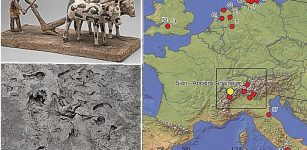 Exciting Find In The Swiss Alps – First Furrows And Animal Tracks Are Evidence Of Prehistoric Plowing
Archaeology | Apr 3, 2024
Exciting Find In The Swiss Alps – First Furrows And Animal Tracks Are Evidence Of Prehistoric Plowing
Archaeology | Apr 3, 2024 -
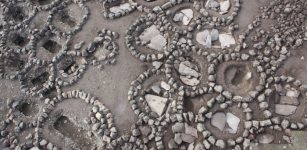 Vast Paleogenetic Study Reveals Insights On Migration, Farming And Language Development Across The Southern Arc
Archaeology | Aug 26, 2022
Vast Paleogenetic Study Reveals Insights On Migration, Farming And Language Development Across The Southern Arc
Archaeology | Aug 26, 2022 -
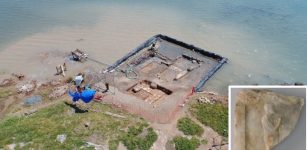 Ancient Greek Seven-Room Building And Treasures Found Underwater Off The Coast Of Salamis
Archaeology | Nov 1, 2023
Ancient Greek Seven-Room Building And Treasures Found Underwater Off The Coast Of Salamis
Archaeology | Nov 1, 2023 -
 Lost Astronomical Treatise By Claudius Ptolemy Discovered
Archaeology | Mar 30, 2023
Lost Astronomical Treatise By Claudius Ptolemy Discovered
Archaeology | Mar 30, 2023 -
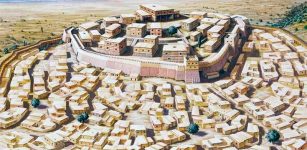 Ancient City Of Troy Was Destroyed By An Earthquake That Ended The Trojan War – Archaeologists Say
Archaeology | Jun 14, 2017
Ancient City Of Troy Was Destroyed By An Earthquake That Ended The Trojan War – Archaeologists Say
Archaeology | Jun 14, 2017

